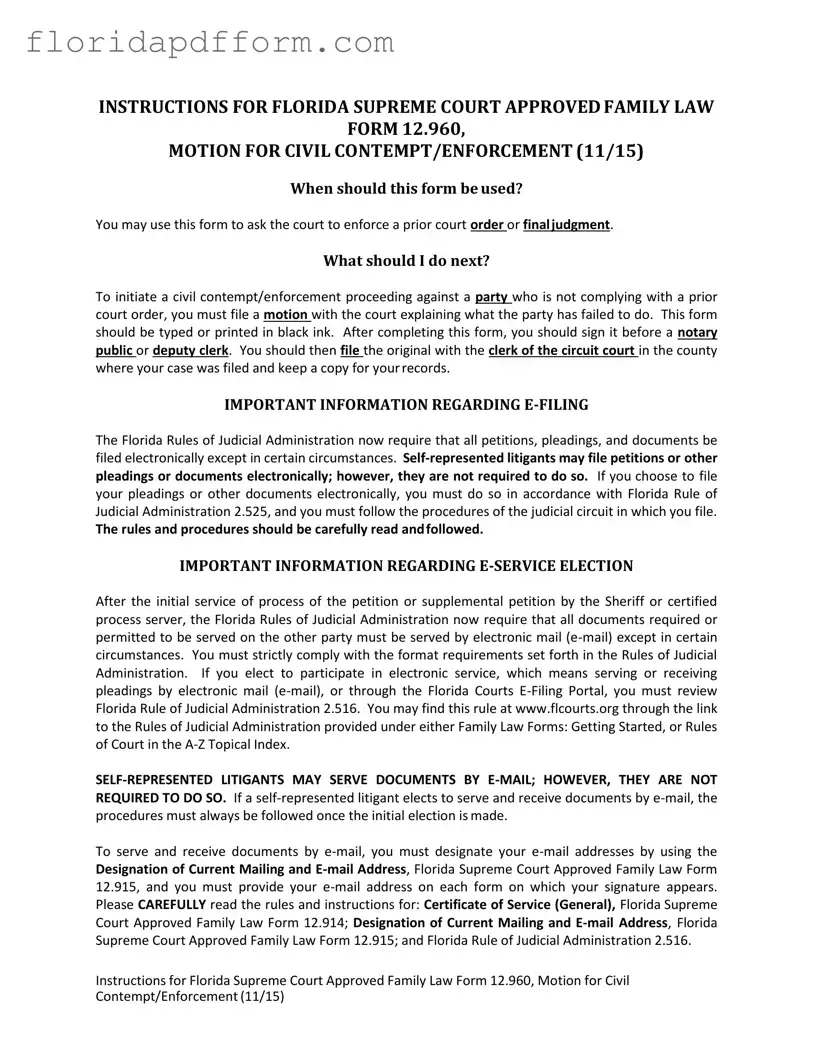How to Use Florida Motion
Filling out the Florida Motion for Civil Contempt/Enforcement form requires careful attention to detail. After completing the form, it must be signed in front of a notary public or deputy clerk. The original should be filed with the clerk of the circuit court in the appropriate county, and a copy should be kept for personal records.
- Obtain the Florida Motion for Civil Contempt/Enforcement form (Form 12.960).
- Fill in the title of the court and the case number at the top of the form.
- Identify the parties involved by entering the names of the Petitioner and Respondent.
- State the reason for the motion by checking either the Petitioner or Respondent box.
- Provide the title and date of the final judgment or order that you are seeking to enforce.
- Describe the specific actions that the other party was ordered to take or refrain from taking.
- Explain how the other party has willfully failed to comply with the court order.
- List the relief you are requesting from the court, checking all applicable options.
- Sign the form in front of a notary public or deputy clerk.
- File the original form with the clerk of the circuit court in the county where your case was filed.
- Keep a copy of the completed form for your records.
- Serve a copy of the motion to the other party, ensuring compliance with service requirements.
Once the form is filed and served, the court will schedule a hearing. It is essential to check with the clerk or family law intake staff for the local procedures regarding hearing scheduling. Prepare to present your case at the hearing, as you will need to demonstrate the other party's noncompliance with the court order.
